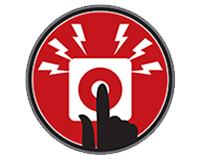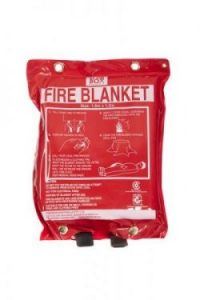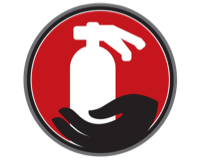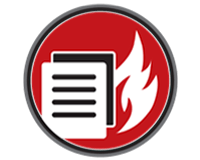
No one wants to be caught in the deadly flames of a raging fire, and we should all hope that in our lifetime, we don’t find ourselves in such an emergency situation. Despite this, we shouldn’t leave it all to chance either. Looking beyond luck, we should take the necessary steps to learn what we can about fire safety and how to use a fire extinguisher just in case the need arises. This is a major reason why fire prevention should be the utmost priority at any home or place of business.
Fire extinguishers are so commonplace, and without a doubt, you’ve seen one almost everywhere. Their placement is strategic and calls to their visibility. They are often placed near exit doors, stairwells, kitchens and work areas. Putting them in the most accessible or fire-prone area of the premises will make them easy to retrieve during the early start of a fire. Furthermore, your office, home or school is most likely to have fire extinguishers in key areas due to fire safety compliance.
If firefighting with a standard fire extinguisher was a numbers game, then the numbers are on your side. You just have to be brave enough (and trained) to use a fire extinguisher and face that starting fire.
According to the Fire And Emergency Services New Zealand
80% of commercial break out fires get extinguished early before it reaches any flashover stage, surprisingly a number of ordinary individuals have dealt with starting fires using the right kind of fire extinguisher appropriate to the fire situation. And yes, no firefighters were called in to put out the fire.
The law is clear on its stance when it comes to fire safety, as per 1991 NZ Building Code in New Zealand, all commercial businesses are required to have working hand-operated fire extinguishers in the premises. Portable fire extinguishers in New Zealand are maintained in accordance with NZS 4503. Also, fire extinguishers should be annually tested to make sure they are in good working order.
How to Use a Fire Extinguisher
The fireandemergency.nz recommends the following steps in using a fire extinguisher during an emergency. One official firefighting acronym you should keep in mind is PTASS which stands for:
Pull the safety clip off the fire extinguisher.
Test the fire extinguisher before you approach the fire, Squeeze the handle for small initial bursts from the canister, this is a sign that the fire extinguisher works.
Aim the nozzle low, direct it at the base of the fire, but please do this from a safe distance.
Squeeze the handle to release the fire suppressant material.
Sweep the fire extinguisher from side to side but keep your aim at the base of the fire.
Some Safety Tips When Using a Fire Extinguisher (And What Not To Do)
It’s best to keep your cool in such burning situations. Some people would suddenly ignore their intuition, abandoning common sense out of sheer panic. But the first thing to do is to keep calm, stay alert and approach the starting fire with caution. Be sensible and follow these safety tips:
Do not merely ignore these photoluminescent sticker labels with letter classifications on fire extinguisher – they are there for a good reason. Fire extinguishers come with labels that indicate the class of fire it’s meant to handle. Not all fires are the same. One of the more common mistakes when using a fire extinguisher is using it on a fire that it’s not meant to deal with. Certain fire extinguishers are not effective on grease fires or electrical fires. To know more about the fire classification and types of extinguishers click here.
Do not come at the fire like some supercharged hero, you are endangering yourself in the process. When you handle a fire extinguisher, the safe distance is at 6-20 feet. Make sure your body is far enough from the flames but close enough to effectively put out the fire.
Just how big is this fire? Try to assess the situation, if the fire is taller than you, or larger than a pot on a stove, then this fire is past the incipient stage and just way too big for a portable fire extinguisher to handle.
Do not back yourself against a wall or a corner. If your efforts to extinguish the fire don’t work out, immediately head out of the burning property. Get out of the house and make sure everyone with you is accounted for.
Fires have a risk of spreading beyond the premises and into other neighboring properties, further endangering lives. Wait for help outside, NZ firefighters are well-equipped and trained to deal with raging fires.
First, we’ll give you an assessment on what type of fire extinguisher you need at your workplace or home in Northland. All fire extinguishers are pressurized canisters labeled to indicate which classes of fire they are designed to combat. We believe that the best way to keep your property and family safe from any fire incident is to be prepared for it.
We’ll help you get familiar with fire extinguishers and how to properly use them. Fireco NZ offers a range of fire safety equipment and training courses which includes practical fire safety training for workplace employees, property occupants, and family members of all ages. This is, of course, just a starting point in the basics of fire safety. But if you think about it, any knowledge of fire safety can make all the difference in saving lives.
All that said, you can fire proof your home with reliable and NZ certified fire safety equipment – Give us a call at 0800 101 232 or leave us a message for a no-obligation free quote.





















